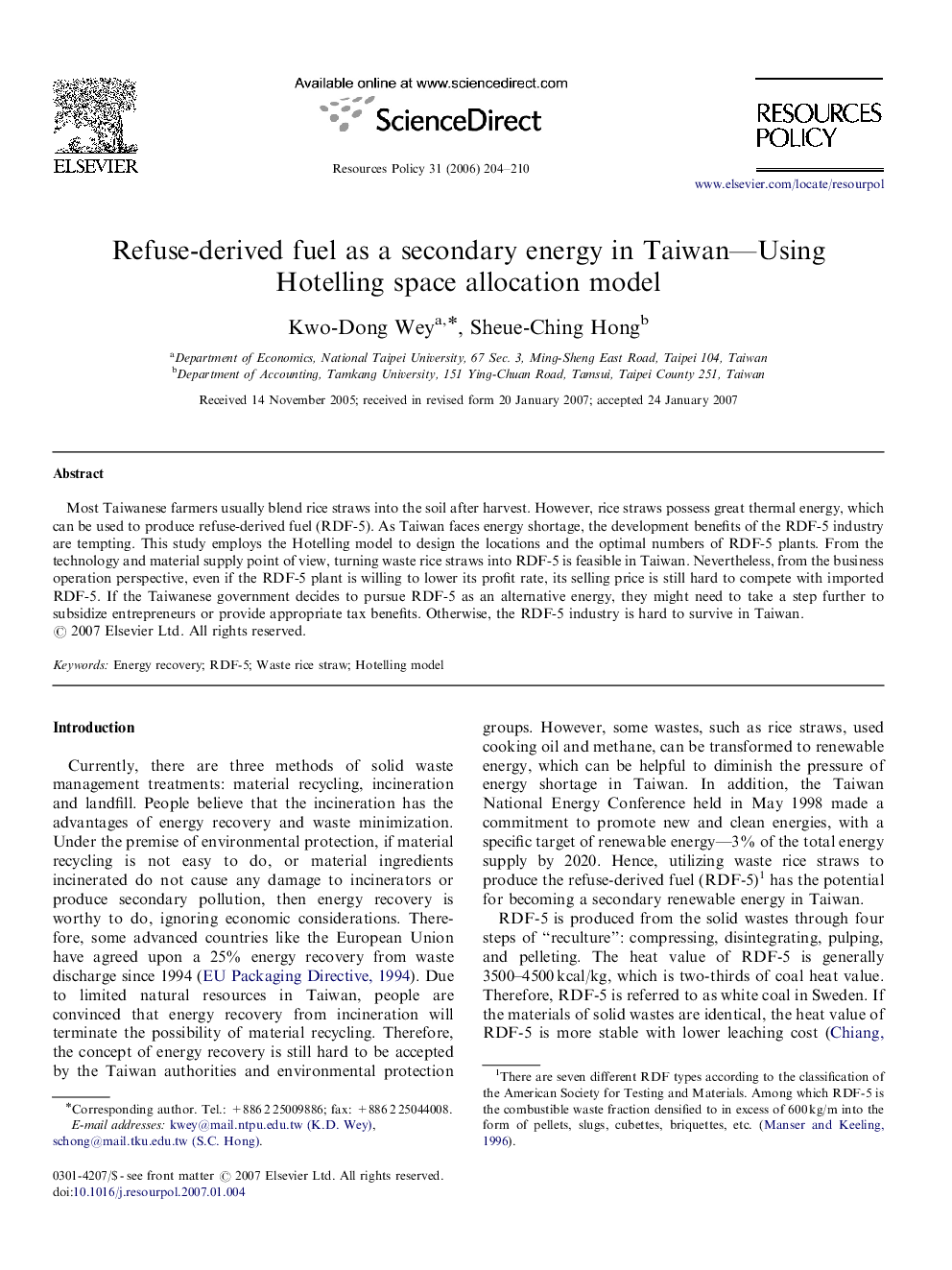| Article ID | Journal | Published Year | Pages | File Type |
|---|---|---|---|---|
| 986213 | Resources Policy | 2006 | 7 Pages |
Most Taiwanese farmers usually blend rice straws into the soil after harvest. However, rice straws possess great thermal energy, which can be used to produce refuse-derived fuel (RDF-5). As Taiwan faces energy shortage, the development benefits of the RDF-5 industry are tempting. This study employs the Hotelling model to design the locations and the optimal numbers of RDF-5 plants. From the technology and material supply point of view, turning waste rice straws into RDF-5 is feasible in Taiwan. Nevertheless, from the business operation perspective, even if the RDF-5 plant is willing to lower its profit rate, its selling price is still hard to compete with imported RDF-5. If the Taiwanese government decides to pursue RDF-5 as an alternative energy, they might need to take a step further to subsidize entrepreneurs or provide appropriate tax benefits. Otherwise, the RDF-5 industry is hard to survive in Taiwan.
